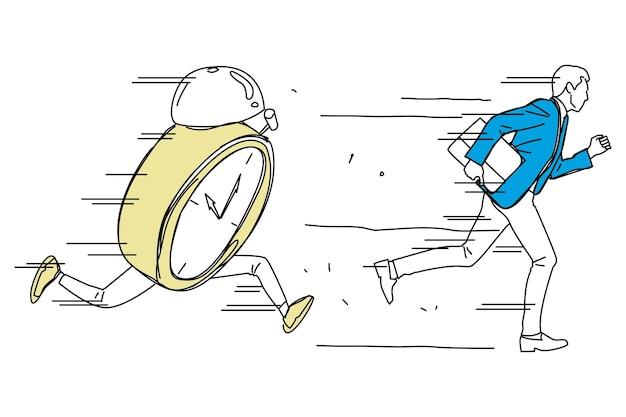Have you ever wondered how a force can bring a moving object to a halt? It’s fascinating to ponder how the application of force can cause an object to change its position, speed, or even size. In this blog post, we will delve into the mechanics of forces and explore how they can stop a moving object.
When a force acts upon an object, it can cause a change in the object’s position. But what exactly is meant by “position”? Well, think of it as the location of an object in relation to a reference point. We can determine the position of an object by measuring its distance and direction from this reference point.
To better understand how forces can stop a moving object, we need to explore the concept of a position-time graph. This graph represents an object’s position at different points in time. By analyzing the graph, we can gain insights into the object’s speed, direction, and any changes in its position over time.
In this blog post, we will explore the relationship between forces, position, and time. We will discuss how pushing or pulling an object can affect its position, and delve into the forces that cause objects to change their size. So, get ready to dive into the world of forces and discover how they can put the brakes on a moving object!
Stay tuned for the fascinating insights and explanations that await you in the upcoming sections of this blog post.

How a Force Can Stop a Moving Object?
Have you ever wondered how a force can put the brakes on a determined moving object? Buckle up, because we’re about to embark on a thrilling journey into the world of motion-stopping forces. Get ready to marvel at the physics behind this forceful spectacle!
Newton’s First Law: Inertia Strikes Back
Ah, good old Sir Isaac Newton and his laws of motion. According to Newton’s first law, an object in motion tends to stay in motion, and an object at rest likes to remain at rest. This quality of stubbornness possessed by objects is known as inertia, and it’s the reason we need an external force to bring a moving object to a halt.
The Power of Friction: Nature’s Brakes
When it comes to enforcing the law of inertia, friction is our mighty ally. Picture this: you’re cruising down the road in your snazzy convertible, but suddenly you need to stop to avoid a wayward chicken. As you hit the brakes, friction steps in to save the day.
You see, friction is an omnipresent force that arises whenever two surfaces rub against each other. It acts opposite to the direction of the object’s motion, effectively slowing it down. So, when you press those brake pedals, the friction between the brake pads and the wheels creates a force that eventually brings you to a halt, sparing the chicken and your front bumper from an unexpected encounter.
Halting with an Equal and Opposite Force
Remember Newton’s third law of motion? It states that for every action, there is an equal and opposite reaction. Well, when it comes to stopping a moving object, this law steps up to the plate.
Imagine you’re playing a thrilling game of dodgeball. Your friend hurls a ball toward you with all their might, but you swiftly catch it. What just happened? Well, in catching the ball, you applied an equal and opposite force to its forward motion, bringing it to a sudden stop.
In the same way, when an external force acts on a moving object, it delivers an equal force that opposes the motion. This dynamic duo of opposing forces eventually cancels out the object’s momentum, grinding it to a halt.
Applying the Brakes: A Showcase of Force
When it comes to stopping a moving object, a force doesn’t just tap it on the shoulder and say, “Hey, could you please slow down a bit?” No, it unleashes a barrage of energetic interactions to bring things to a standstill.
Let’s take the example of a car coming to a stop. As you press the brake pedal, a complex ballet of forces unfolds. The brake system converts your foot power into hydraulic pressure, amplifying the force applied to the brake pads. These pads then grip the spinning brake discs, converting the kinetic energy of the car into heat energy through friction. Bit by bit, the force exerted by the brakes counteracts the car’s motion until it finally comes to a complete stop. Phew!
From the stubborn nature of inertia to the tireless heroism of friction, we’ve unraveled the secrets behind stopping a moving object. Whether it’s the brakes on your car or a sneaky dodgeball catch, forces are the unsung heroes that save the day and prevent chaos from running rampant on our planet.
So, the next time you witness a force bring a moving object to a halt, take a moment to appreciate the physics at play. After all, we owe a debt of gratitude to these invisible warriors safeguarding our universe against runaway objects.

FAQ: How a Force Can Stop a Moving Object?
When Does a Force Change the Position of an Object
A force changes the position of an object when it overcomes the object’s inertia and affects its motion. In simple terms, when you apply a force to an object, you can expect it to move!
What’s the Formula for the Position-Time Graph
Ah, the good old position-time graph formula. It’s quite straightforward! The formula is distance = velocity × time. In other words, how far an object travels depends on its speed and the time it takes to travel.
How Can a Force Stop a Moving Object
Well, well, well! The million-dollar question! When a force acts upon a moving object, it opposes its motion. This opposition gradually reduces the object’s speed until it comes to a full stop. So basically, it’s like playing tug-of-war with the object’s momentum.
What’s the Fancy Term for a Position-Time Graph
Oh, you want to sound smart in physics conversations, don’t you? A position-time graph is also known as a displacement-time graph. Fancy, huh? It shows how an object’s displacement changes over time. Just remember, you heard it here – displacement is the cool kid’s term for position!
How Fast Is an Object Moving
The speed of an object determines how fast it’s zooming around. Now, hang tight for a math party! Speed is calculated by dividing the distance traveled by the time it took. In simpler terms, it’s all about how far and how quickly an object can boogie down.
What Happens When You Push or Pull Objects
Well, well, what do we have here? It’s Mr. Newton knocking on our door! When you apply a force by pushing or pulling an object, you’re influencing its movement. Pushing it forward makes it move forward, and pulling it backward makes it move backward. It’s like magic, only 100% science.
How Can You Determine the Position of an Object
Oh, dear detective, here’s your clue! To determine the position of an object, you only need to know how far it is from a reference point. Just measure that distance, and voila! You’ve discovered the object’s position. It’s like playing hide and seek and shouting, “I found you!”
What Force Causes an Object to Change Position
Watch out, folks! It’s the force behind the motion! When an object changes position, we have a culprit to blame – it’s the all-powerful net force. This sneaky force acts upon an object, causing it to respond and move from one place to another. Smooth criminal, that force!
What Would be Needed to Change the Size of an Object
Are you asking for some magic beans to grow a beanstalk? Well, changing the size of an object requires altering its dimensions. You’d need some serious size-changing superpowers or the ability to perform some high-level 3D printing wizardry. But alas, we’re all just mortals here!
How Can Force Change the Size of an Object
Ah, stretching and squeezing, the superheroes of size change! If you want to alter the size of an object, you’d need to exert forces that cause it to stretch or compress. It’s like playing with a rubber band – pull it, and it stretches; squeeze it, and it squishes. Elasticity, my friend!
Remember, my curious friends, understanding the relationship between force and motion opens doors to a world filled with exciting possibilities. So keep exploring, keep questioning, and keep your minds as sharp as a needle!
